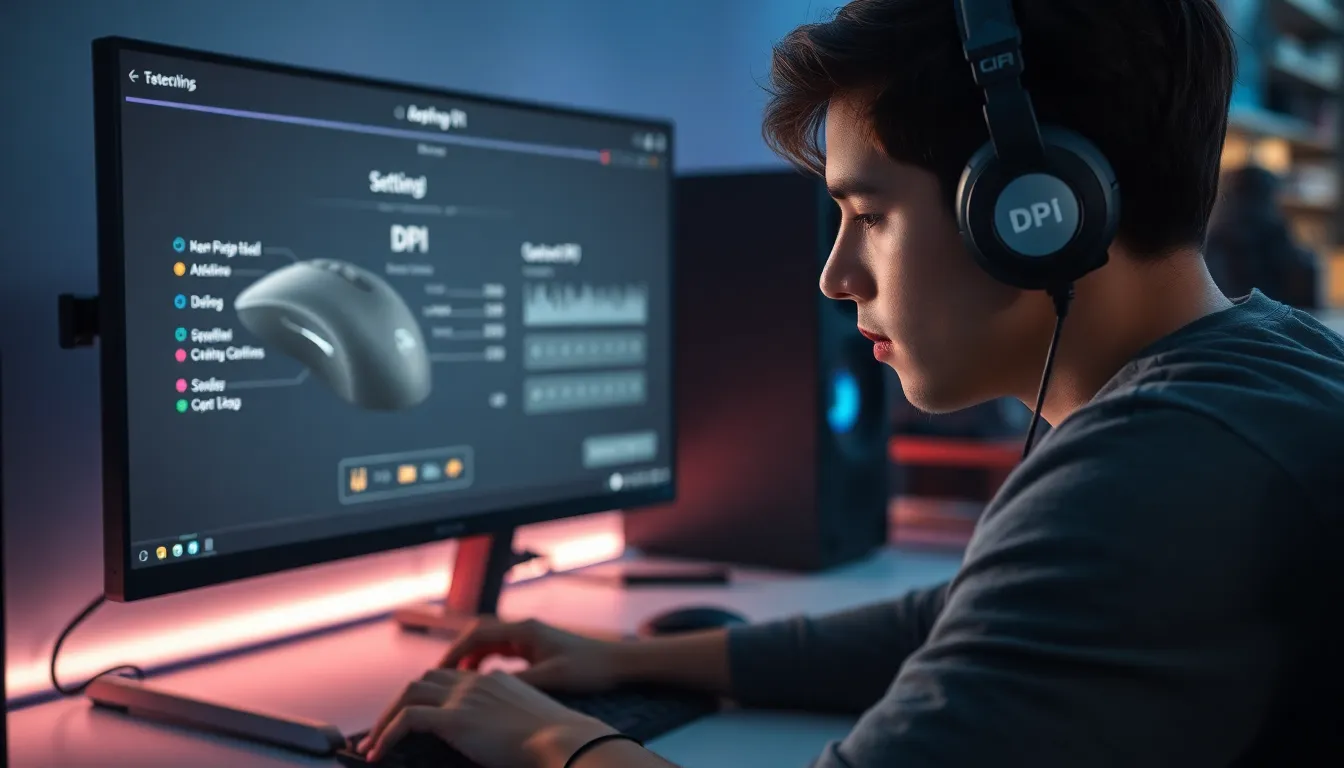In the chaotic world of gaming, where split-second decisions can mean the difference between victory and defeat, mouse sensitivity isn’t just a number—it’s a game-changer. Imagine trying to snipe an enemy from across the map while your mouse sensitivity feels like you’re trying to steer a ship in a hurricane. Frustrating, right? Finding that sweet spot can elevate gameplay from “meh” to “magnificent.”
Table of Contents
ToggleUnderstanding Battlefield Mouse Sensitivity
Mouse sensitivity in gaming refers to how movement on the mouse translates to movement on the screen. Adjusting sensitivity settings allows players to fine-tune their control for better precision.
What Is Mouse Sensitivity?
Mouse sensitivity measures how much the cursor moves in response to physical input. It’s typically expressed in dots per inch (DPI). A higher DPI value results in quicker movements with less physical motion, while a lower DPI offers more control with more deliberate movements. Players can adjust settings within the game or through mouse software, tailoring sensitivity to their personal preferences.
Importance of Sensitivity in Gaming
Sensitivity significantly impacts aim precision and overall gameplay performance. Players experience improved accuracy when sensitivity settings reflect their play style. High sensitivity enables swift target acquisition, essential for fast-paced games. Alternatively, lower sensitivity allows for more control when executing precise shots, vital for strategic play. A balanced sensitivity setting enhances response time without sacrificing accuracy, driving better in-game outcomes.
Factors Affecting Mouse Sensitivity

Mouse sensitivity can change dramatically based on various factors. Understanding these components helps gamers find their optimal settings.
DPI Settings
DPI settings define how mouse movement correlates with on-screen action. Higher DPI values lead to quicker cursor movements, suitable for fast-paced games. Lower DPI values enhance control, making it easier to aim precisely. For example, most gamers prefer a DPI range between 400 and 800 for first-person shooters. Professional players often select DPI settings based on their personal playing style, balancing speed and accuracy.
In-Game Sensitivity
In-game sensitivity settings adjust how movements translate to character actions. Each game allows unique configurations, impacting performance. Typically, a lower in-game sensitivity works best for sniping, enhancing precision. Conversely, a higher sensitivity aids in quick turns and evasive maneuvers. Gamers frequently experiment with different levels to find what suits their gameplay style most effectively. Custom settings can lead to better tracking and target acquisition.
Mouse Acceleration
Mouse acceleration alters sensitivity based on speed of movement. When a gamer moves the mouse quickly, the cursor moves farther than when the mouse is moved slowly. This feature can enhance responsiveness but may hinder muscle memory. Many competitive players disable mouse acceleration for consistency during gameplay. Disabling this setting maintains a direct correlation between mouse movement and on-screen action. Understanding mouse acceleration is crucial for players aiming for precision and reliability.
Finding the Right Sensitivity for Battlefield
Finding the right mouse sensitivity for Battlefield dramatically affects gameplay performance. Proper settings enhance player control, improving overall aim and responsiveness.
Recommended Sensitivity Settings
Most competitive players prefer a DPI of 400 to 800 in Battlefield. Lower DPI settings, around 400, offer better precision for sniping, allowing for accurate targeting. In contrast, a higher sensitivity within the range promotes quicker adjustments for fast-paced combat. Recommended in-game sensitivity typically falls between 10-20 depending on personal comfort. Consistency across both DPI and in-game settings leads to a more stable performance, as adjustments in one setting can impact the other.
Personal Preferences and Gameplay Style
Personal preferences drive mouse sensitivity choices among players. Those focusing on sniping often select lower sensitivity for better control. Players engaged in close-quarters combat might lean towards higher sensitivities, enabling rapid movement. Experimenting with different settings reveals which works best, highlighting the importance of comfort in gameplay. Individual play styles vary significantly, thus testing various configurations ensures an optimal experience that suits each gamer’s approach.
Testing Mouse Sensitivity
Testing mouse sensitivity requires a methodical approach to find optimal settings. Players must assess their comfort and performance through various techniques.
Methods for Testing
Utilize the in-game training modes to evaluate sensitivity settings. These modes provide controlled environments for practice. Another approach involves using aim training software, where players can fine-tune their sensitivity while completing specific drills. Players should adjust DPI settings incrementally to observe changes in precision and control. Moreover, conducting live matches allows for real-time feedback on sensitivity, enabling players to make decisions based on performance in actual gameplay scenarios. Tracking improvements in accuracy offers valuable insights into the effectiveness of the chosen settings.
Tools and Resources
Several tools enhance the testing process for mouse sensitivity. Aim training applications, such as Kovaak’s and Aim Lab, allow players to experiment with different sensitivity settings in a tailored environment. Mouse calibration software may assist in fine-tuning DPI settings for optimal performance. Players can use FPS aiming tools that track metrics like accuracy and reaction time. Reviewing sensitivity calculators online provides quick comparisons of personal settings against standard benchmarks. Additionally, communities on forums or gaming-centric platforms offer shared configurations and advice based on collective experience. These resources contribute significantly to discovering the ideal mouse sensitivity settings.
Finding the right mouse sensitivity is essential for any Battlefield player looking to enhance their gameplay. It’s not just about personal preference but about optimizing performance in various combat scenarios. By experimenting with DPI settings and in-game sensitivity, players can discover a balance that suits their style. Utilizing training modes and aim software can further refine these settings, ensuring that each player achieves their best possible performance. Ultimately, the right sensitivity can be the difference between victory and defeat in the heat of battle.





